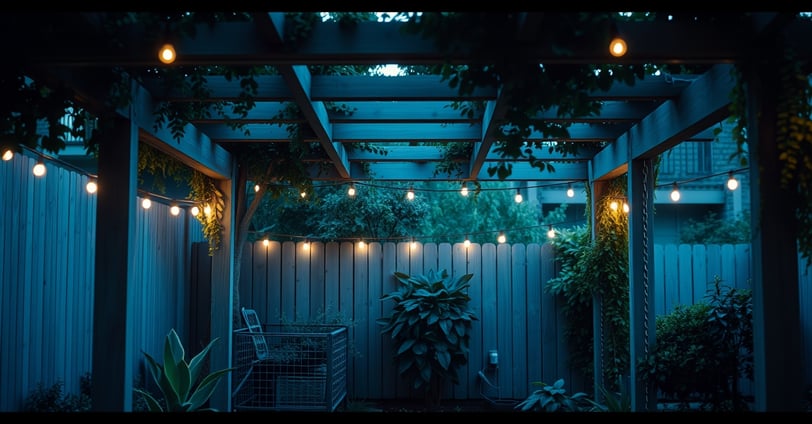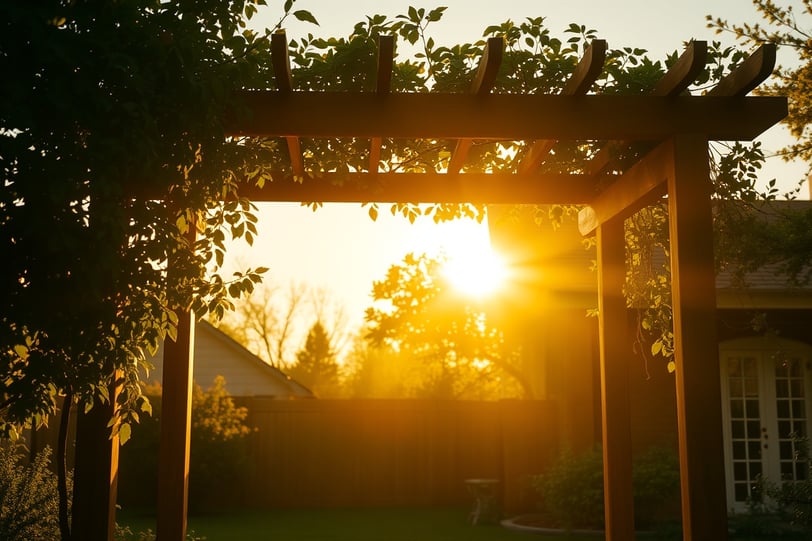How Wooden Arbors Enhance Your Outdoor Space
Wooden arbors are elegant outdoor structures that add architectural interest and support climbing plants, enhancing the beauty of gardens and landscapes with their rustic charm and functionality.


I've seen that when it comes to enhancing the beauty and functionality of your outdoor space, a wooden arbor is a timeless and elegant choice. Not only do wooden arbors provide a charming architectural feature, but they also serve as a focal point for gardens, patios, or backyard landscapes. Learn how to build your own wooden arbor in this guide, where we’ll explore the many benefits of wooden arbors, how to choose the right one for your space, and the best ways to incorporate them into your outdoor design.
Why Choose a Wooden Arbor for Your Garden?
A wooden arbor can elevate your outdoor living space, offering both aesthetic appeal and practical benefits. Here are a few reasons why many homeowners opt for a wooden arbor:
Timeless Aesthetic: The natural beauty of wood complements a variety of garden styles, from traditional to rustic. It brings warmth, texture, and a touch of elegance to any outdoor area.
Versatility: Wooden arbors are available in a wide range of designs and sizes. Whether you prefer a simple arch or a more elaborate structure with integrated seating or trellises, there's a wooden arbor that suits your preferences.
Customizability: Wood is a versatile material that can be stained, painted, or left in its natural state to match your garden’s theme. A wooden arbor can be customized with climbing plants, flowers, or vines, allowing you to create a personalized and inviting entrance or garden nook.
Durability: When properly cared for, wooden arbors are long-lasting and durable. With a coat of weather-resistant finish, a wooden arbor can withstand the elements, making it a lasting investment in your garden or yard.
How to Choose the Right Wooden Arbor
Selecting the perfect wooden arbor for your space involves considering factors such as size, style, and material quality. Here’s a step-by-step guide to help you make an informed decision:
Size Matters: Before purchasing a wooden arbor, measure the area where you plan to install it. Consider the height, width, and depth that will fit the space without overcrowding the surrounding plants or pathways. If you’re looking for an arbor to create an entrance, ensure that it’s wide enough to accommodate foot traffic.
Style and Design: Wooden arbors come in various styles, including traditional, modern, and rustic designs. The style of the arbor should complement the architecture of your home or the overall aesthetic of your garden. If your garden features a lot of floral elements, a traditional style arbor with intricate detailing could work well. For a minimalist approach, a sleek, modern wooden arbor may be more fitting.
Material Quality: Not all wood is created equal. For the best results, choose a wooden arbor made from durable, weather-resistant wood types such as cedar, redwood, or pressure-treated pine. Cedar and redwood are naturally resistant to decay and insects, while pressure-treated pine offers long-lasting durability at a more affordable price point.
Add-On Features: Many wooden arbors include additional features such as built-in seating, planters, or trellises for climbing plants. If you want your arbor to serve as more than just a decorative element, look for designs with integrated features that enhance both functionality and style.


How to Incorporate a Wooden Arbor Into Your Garden Design
Once you’ve chosen the perfect wooden arbor, it’s time to consider how to incorporate it into your garden or outdoor space. Here are a few ideas on how to use your new arbor creatively:
Create a Garden Gateway: One of the most popular uses of a wooden arbor is as an entrance or gateway into a garden. Position the arbor at the end of a garden path, where it will frame the entrance to your outdoor sanctuary. Add climbing plants such as roses, jasmine, or ivy to the structure to create a natural, welcoming arch.
Add Shade to Your Outdoor Living Space: If you’re looking for a way to add shade to a seating area, a wooden arbor can serve as a perfect structure to support overhead vines or plants. Consider placing the arbor over a bench, swing, or patio area to create a shaded retreat where you can relax and enjoy your garden.
Enhance Your Outdoor Privacy: For smaller yards or areas where privacy is a concern, a wooden arbor can provide a sense of seclusion. Position it along the edge of your garden or next to a fence, and plant climbing vines or flowering plants to create a natural privacy screen.
Combine with Garden Trellises or Gates: A wooden arbor can also work well when paired with garden trellises or gates. This combination allows you to create a seamless transition between different sections of your garden, such as from one flower bed to another, or between a vegetable garden and your backyard.
Add Seasonal Interest: Wooden arbors can be decorated to reflect the changing seasons. During spring and summer, plant flowering vines that provide colorful blooms. In fall, decorate with seasonal foliage or pumpkins, and in winter, use the structure as a base for holiday lights or evergreen garlands.
Maintaining and Caring for Your Wooden Arbor
To ensure the longevity of your wooden arbor, regular maintenance is essential. Here are some tips to keep your arbor in top condition:
Clean the Arbor Regularly: Dust, dirt, and debris can accumulate on your wooden arbor over time. Clean the structure with a soft brush and mild soap and water. Be sure to rinse thoroughly to prevent the buildup of soap residue.
Check for Signs of Damage: Regularly inspect your wooden arbor for signs of wear, such as cracking, splintering, or rotting wood. If you notice any damage, make repairs promptly to prevent further deterioration.
Apply a Protective Finish: To protect your wooden arbor from the elements, apply a weather-resistant finish or sealant. This will help preserve the wood and prevent moisture from causing rot. Consider reapplying the finish every few years, especially if your arbor is exposed to harsh weather conditions.
Protect from Pests: Wooden structures can attract insects such as termites and carpenter ants. Keep an eye out for signs of infestation, and treat the wood with a pest-repellent solution if necessary.
Maintain Your Climbing Plants: If your wooden arbor is used as a support for climbing plants, be sure to trim and maintain them regularly. Overgrown vines can become heavy and cause strain on the arbor structure.
Final Thoughts
A wooden arbor is an investment that can enhance the aesthetic and functional appeal of your outdoor space. With its timeless beauty, versatility, and ability to support plant growth, a wooden arbor can create an inviting atmosphere in your garden or patio area. Whether you use it as a garden gateway, a shade structure, or a privacy screen, it will undoubtedly become a focal point of your outdoor design. Learn how to build your own wooden arbor here and start creating a beautiful addition to your garden or yard today.
In my opinion, incorporating a wooden arbor into your garden design is such a simple yet effective way to elevate the overall look and feel of your yard. I’ve noticed that whether you're aiming to create a serene retreat, add a touch of romance, or even improve your garden’s functionality, a wooden arbor is a choice you definitely won’t regret. It's one of those additions that really brings something special to your space. If you're considering it, I believe it’s worth taking that first step and bringing this charming feature to your garden—you’ll enjoy all the benefits it has to offer.
